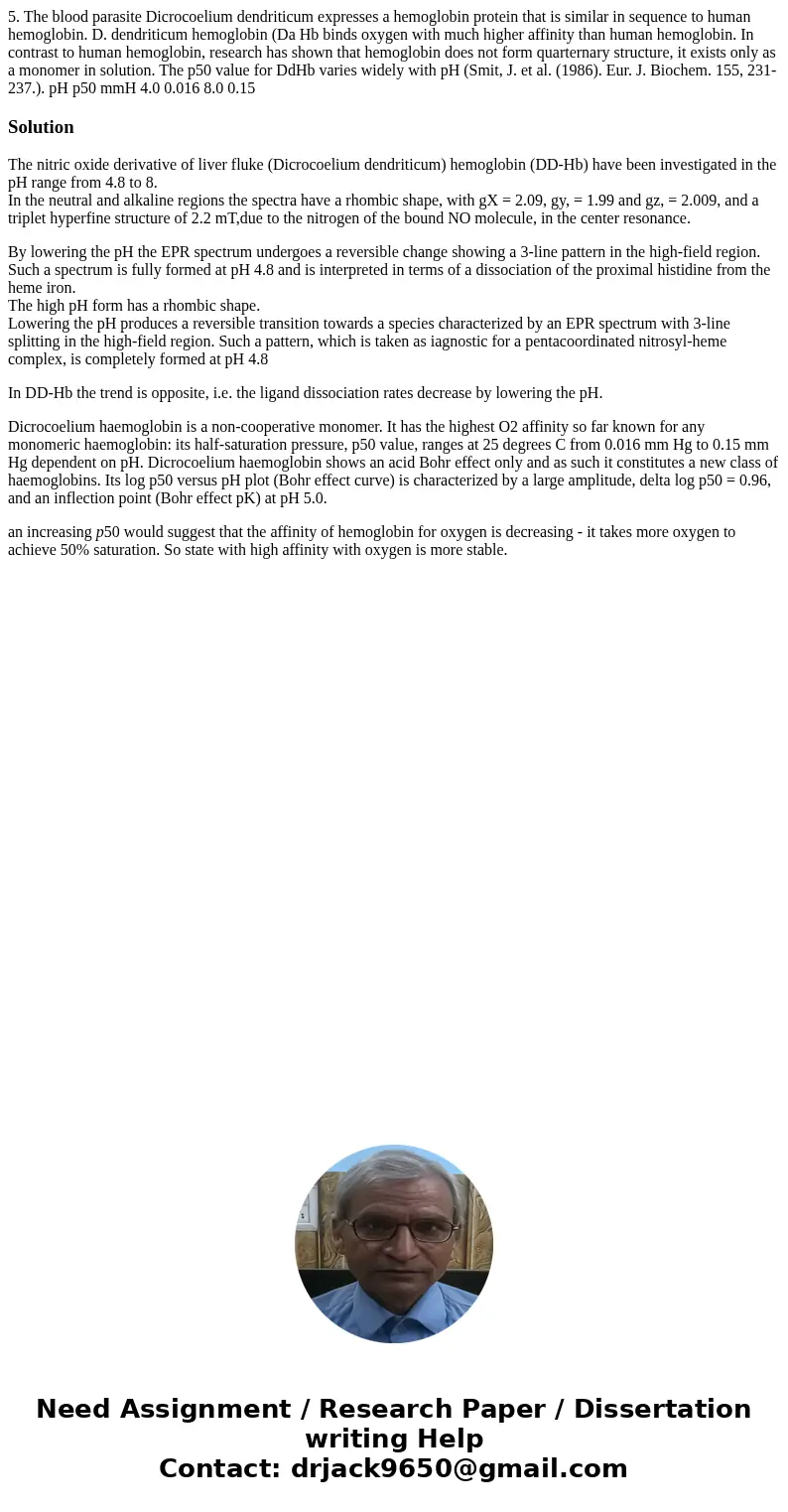5 The blood parasite Dicrocoelium dendriticum expresses a he
Solution
The nitric oxide derivative of liver fluke (Dicrocoelium dendriticum) hemoglobin (DD-Hb) have been investigated in the pH range from 4.8 to 8.
In the neutral and alkaline regions the spectra have a rhombic shape, with gX = 2.09, gy, = 1.99 and gz, = 2.009, and a triplet hyperfine structure of 2.2 mT,due to the nitrogen of the bound NO molecule, in the center resonance.
By lowering the pH the EPR spectrum undergoes a reversible change showing a 3-line pattern in the high-field region. Such a spectrum is fully formed at pH 4.8 and is interpreted in terms of a dissociation of the proximal histidine from the heme iron.
The high pH form has a rhombic shape.
Lowering the pH produces a reversible transition towards a species characterized by an EPR spectrum with 3-line splitting in the high-field region. Such a pattern, which is taken as iagnostic for a pentacoordinated nitrosyl-heme complex, is completely formed at pH 4.8
In DD-Hb the trend is opposite, i.e. the ligand dissociation rates decrease by lowering the pH.
Dicrocoelium haemoglobin is a non-cooperative monomer. It has the highest O2 affinity so far known for any monomeric haemoglobin: its half-saturation pressure, p50 value, ranges at 25 degrees C from 0.016 mm Hg to 0.15 mm Hg dependent on pH. Dicrocoelium haemoglobin shows an acid Bohr effect only and as such it constitutes a new class of haemoglobins. Its log p50 versus pH plot (Bohr effect curve) is characterized by a large amplitude, delta log p50 = 0.96, and an inflection point (Bohr effect pK) at pH 5.0.
an increasing p50 would suggest that the affinity of hemoglobin for oxygen is decreasing - it takes more oxygen to achieve 50% saturation. So state with high affinity with oxygen is more stable.

 Homework Sourse
Homework Sourse